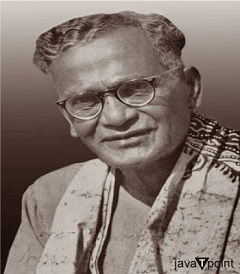Nandalal Bose
Indian art would never be the same because of Nandalal Bose, a significant player in contextual modernism. He was a proponent of the "Indian style" of painting when he emerged from his birthplace of Haveli Kharagpur, Bengal Presidency (now in Bihar, India), on December 3, 1882. Bose, who had studied under Abanindranath Tagore, was appointed Kala Bhavana's principal in Santiniketan in 1921. His works, which included depictions of Indian legends, village life, and ladies, were greatly influenced by the Tagore family and the Ajanta murals. Many experts consider his works among India's most important modern paintings. Early Life and Artistic DevelopmentThe journey of Nandalal Bose's creativity began early. His mother's toy-making skills encouraged him to be creative from a young age. He was raised in a middle-class Bengali family. He battled his family's aspirations to pursue an art degree after relocating to Calcutta for his education. In the end, he enrolled in Calcutta's School of Art and developed his abilities, paving the way for an extraordinary career. Personal Legacy and LifeBose wed Sudhira Devi in 1903, and their daughter Gauri made his life prosperous. On April 16, 1966, Nandalal Bose's trip came to an end. His large body of work, which is maintained at the National Gallery of Modern Art in Delhi, as well as his crucial contribution to India's cultural revival, serve as a living testament to his legacy. Mentorship Under Abanindranath TagoreWhen Nandalal Bose decided to study under renowned painter Abanindranath Tagore, that was when his life changed. Bose was initially cautious, but Tagore and art critic E.B. Havell were both taken aback by his talent and capacity to replicate European techniques. Bose's five-year apprenticeship with Tagore was crucial in forming his sense of artistic self. Career and Contribution to the ArtsBose made his debut in the art world by participating in an Indian Society of Oriental Art exhibition and displaying works like "Siva and Sati" and "Sati." His talent brought him acclaim and financial assistance, which he utilized to travel and find inspiration in India's various landscapes. He skillfully merged his attention on Indian subjects with Western techniques, expressing the essence of daily life in his paintings. Artistic Innovation and StyleThe murals in the Ajanta Caves had a significant impact on Bose's artistic vision. Along with a group of international artists and authors, he was instrumental in reviving classical Indian culture. His 1930 linocut image of Mahatma Gandhi strolling with staff became a recognizable symbol of the anti-violence movement. He encouraged aspiring artists while serving as Kala Bhavana's principal in Santiniketan, where he also helped to enhance the original copy of India's constitution. Critics and other artists alike praised his subtle genius, and his legacy is still being developed. Honors and LegacyNandalal Bose received various honors for his achievements. In 1907, he became the first scholar to be awarded a scholarship by the Indian Society of Oriental Art. He was elected a Fellow of the Lalit Kala Akademi in 1954, the same year he earned the prestigious Padma Vibhushan award. Additionally, he was awarded the Tagore Birth Centenary Medal and given the honorary title of "Deshikottama" by Vishvabharati University. With more than 7,000 of his pieces on display at the National Gallery of Modern Art in Delhi, his influence on Indian art is still felt today. Influence and RecognitionThe achievements of Raphael and Durer during the Renaissance are frequently contrasted with Nandalal Bose's influence on modern Indian art. He opened the path for a distinctive art movement in India by synthesizing concepts from many sources, such as Abanindranath Tagore, Mahatma Gandhi, and classical Indian art. Despite his reserved manner, his legacy lives on via the creations of his esteemed students and the continuous acclaim for his art in India and around the globe. Publications and Additional ResourcesBeyond his artistic output, Nandalal, Bose also had an impact on writers. His works include "Shilpa Charcha" (Art Discussion) and "Drishti o Srishti" (Vision and the Creation). Through books and essays, numerous academics and industry professionals have examined his life and work, shedding light on his enormous contributions to Indian art. Conclusion: The Long-Lasting Effect of a Visionary ArtistNandalal Bose overcame challenges to establish himself as a pioneer of contemporary Indian artistic expression, and his life story is a testament to his unwavering devotion to art. He made an enduring impression on Indian Art with his paintings and achievements, winning acclaim and admiration that still exist today.
Next TopicSeema Anand
|
 For Videos Join Our Youtube Channel: Join Now
For Videos Join Our Youtube Channel: Join Now
Feedback
- Send your Feedback to [email protected]
Help Others, Please Share









